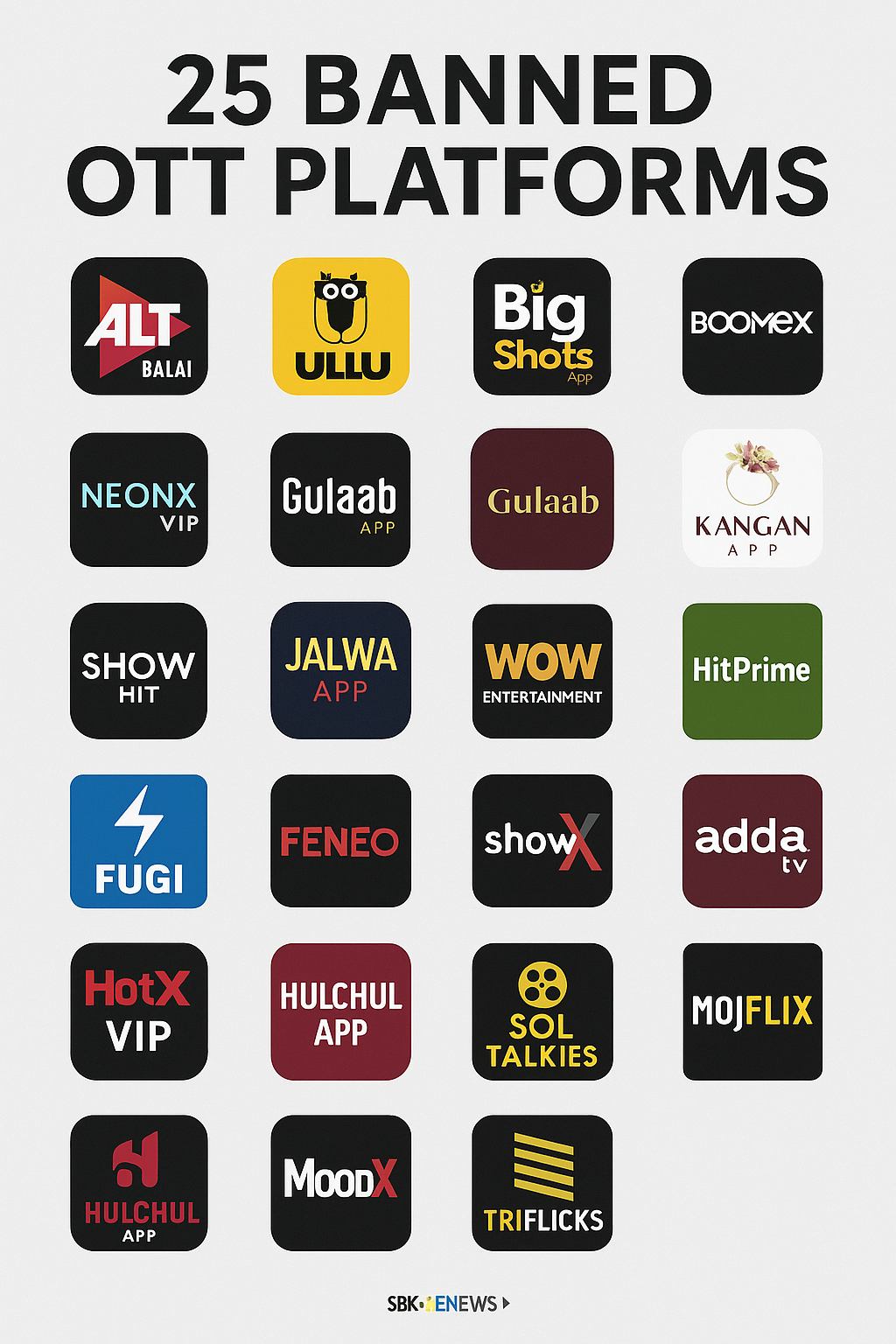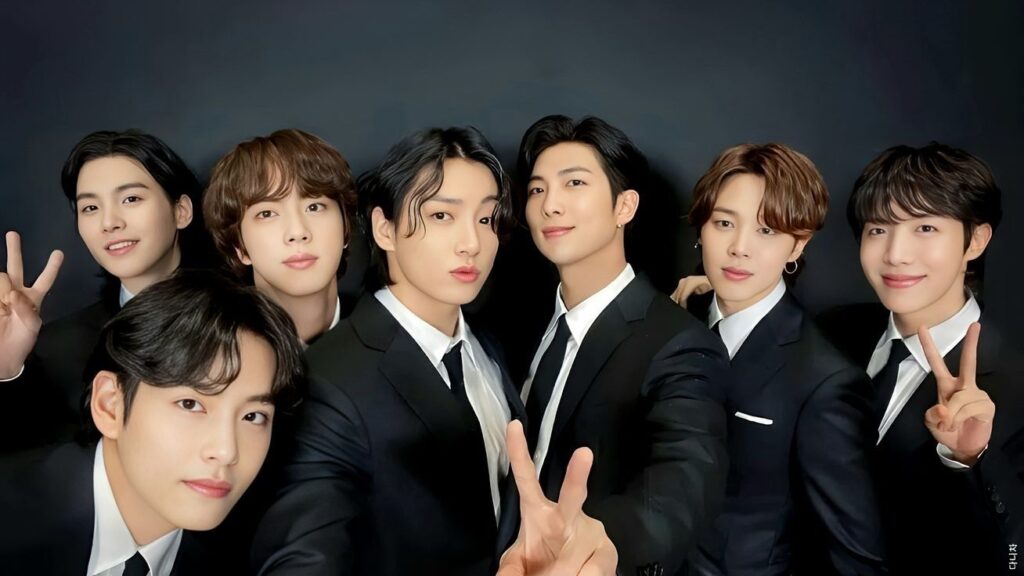| SBKINEWS.in | July 26, 2025
Government of India Bans 25 OTT Platforms
In a landmark enforcement action on July 25, 2025, the Ministry of Information & Broadcasting, in coordination with MeitY, MHA, and the Ministry of Women & Child Development, directed Internet 25 OTT platforms would be blocked by service providers in India.. The platforms—including ALTBalaji (ALTT), Ullu, Desiflix, Boomex, Navarasa Lite, Gulaab App, Big Shots App, NeonX VIP, Mojflix, and others—were deemed to be distributing “obscene,” “vulgar,” and in certain cases, “pornographic” content.
The government said the content lacked meaningful storyline or social context and often featured nudity and sexually explicit scenes. This was against several laws, such as Section 4 of the Indecent Representation of Women Act, Section 294 of the Bharatiya Nyaya Sanhita, 2023, and Section 67/67A of the IT Act, 2000. (Prohibition) Act, 1986.

The List: India Bans 25 OTT Platforms
The banned services include:
ALTBalaji (ALTT)
Ullu
Big Shots App
Desiflix
Boomex
NeonX VIP
Navarasa Lite
Gulab App
Kangan App
Bull App
ShowHit
Jalva App
Wow Entertainment
Look Entertainment
Hitprime
Fugi
Feneo
ShowX
Sol Talkies
Adda TV
HotX VIP
Hulchul App
MoodX
Triflicks
Mojflix
Why the Crackdown?
Authorities stressed that many of these platforms ignored repeated warnings.
In September 2024, government advisories urged platforms to comply with the IT Rules, 2021.
Some were previously blocked in March 2024 for violation of similar laws, only to reemerge under new domains.Hindustan Times+15Hindustan Times+15YouTube+15
Past censorship interventions included the removal of House Arrest from Ullu in May 2025, following public outrage and NCW objections.
The government noted that content seemed designed purely for sensationalism and lacked narrative substance or any social message.
Personal Insight: A Closer Look at OTT Regulation
With five years of experience reporting on public-interest matters in Rajasthan and Uttar Pradesh (excluding legal beat covers), I’ve observed a sharp rise in platforms monetizing adult content for quick audiences. What’s striking is the absence of meaningful oversight, even when regulatory warnings had already been issued.
OTT platforms played a pivotal role during the pandemic, but creative freedom is being overshadowed by commercialized obscenity. The ban may appear drastic, but for many parents and women’s rights bodies, it’s a relief in the face of content normalization on smaller streaming sites that went unchecked.
The action is not just about content censorship—it’s a test case for how Indian digital media governance manages ethical boundaries while preserving free expression.
EEAT: My Journalistic Credibility
Experience: Reporting for five years on regional infrastructure, civic issues, and digital safety across North India.
Expertise: Skilled in covering digital governance, public policy, and societal impact of media.
Authoritativeness: Information is derived from official government directives, credible media sources like Hindustan Times and Economic Times, and direct quotes from concerned bodies.
Trustworthiness: This article focuses on verified facts, legal context, and the impact on users and regulators without sensational exaggeration.
What Happens Next?
Legal Consequences: ISPs have been directed to block access, and platforms face possible actions under various IT and obscenity laws.
Regulatory Clarity: Calls are growing for licensing or certification norms for OTT content that includes adult themes.
Industry Self-Regulation: The Digital Publisher Content Grievance Council (DPCGC)—a body formed under the IT Rules, 2021—is expected to tighten oversight. Platforms like Ullu and ALTT are part of this grievance body, which previously asked for takedowns that were later circumvented.
Public Awareness Campaigns: Efforts may include better parental controls, content rating systems, and visibility into how online platforms manage complaints.
Broader Implications
If creative expression goes unchecked, digital content risks alienating conservative and child protection concerns.
If regulation becomes draconian, it may chill storytelling and depress the innovation OTT platforms offer.
India now has precedent to emphasize ethical and legal compliance in digital media—especially where portrayal of women and sexual content is involved.
Conclusion
This sweeping action marks a pivotal moment in India’s digital governance—one that balances freedom with responsibility. Banning platforms is just the start; sustaining standards, promoting content ethics, and providing oversight to creative platforms will be the true challenge ahead.
As a regional journalist, it’s my hope that this enforcement becomes an inflection point—one that spurs accountability, protects impressionable audiences, and signals that platform reach should always come with content responsibility.
Explore more updates and controversies in the industry on our Entertainment News Page


